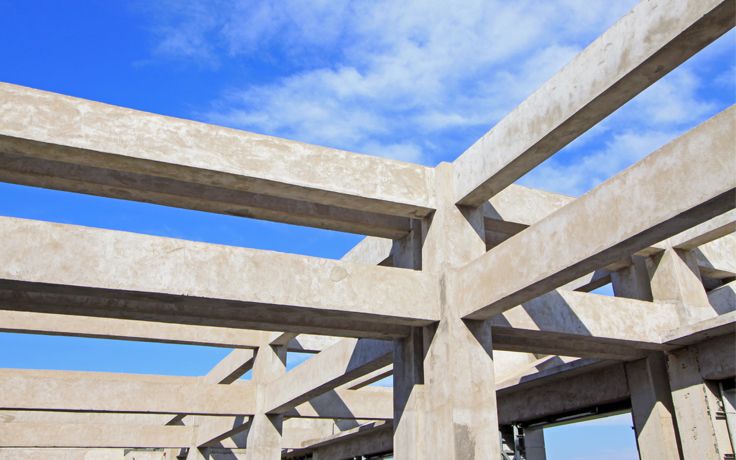£7.75 delivery on orders excluding certain products & postcodes *
Ronacrete RonaBond Flowable Micro Concrete
RonaBond Flowable Micro Concrete is a repair concrete used for reinstatement of structural elements such as columns and beams.
Best Uses
RonaBond Flowable Micro Concrete is designed for pumped or poured application to watertight shutters when hand application of mortars is impractical or undesirable.
- Flowable structural repair concrete for large volume repairs
- High ultimate strength
- High cement replacement content reduces curing temperature and carbon footprint
- Free flowing through congested reinforcement arrays
- Shrinkage compensated
- Can be pumped or poured
Application
RonaBond Flowable Micro Concrete must be mixed in a forced action mixer eg. Baron or CreteAngle pan mixer, a suitable Putzmeister mixer/ pump such as Putzmeister SP 11 LMR or for smaller volumes, a 1kW slow speed [≤ 500 rpm] drill fitted with an MR4 spiral paddle). Place the minimum quantity (2.5 litres) of water for each pack of material in the mixer and gradually add the powder, mixing continuously. Add more water as required up to the maximum total content of 3.5 litres per pack. Mix for up to 5 minutes to achieve a lump free consistency.
Preparation and Priming
All concrete identified for removal must be cut out by approved means to expose a suitable substrate which is sound, stable and strong enough to accept RonaBond Flowable Micro Concrete. . Concrete around steel reinforcement must be fully removed, to provide a gap of 15mm between concrete and steel, until clean uncorroded steel is exposed. Loose rust and scale must be removed. Heavily corroded steel should be assessed by the engineer and replaced as necessary. When repairing chloride contaminated concrete, exposed steel must be grit blasted to expose bright, uncorroded steel before washing to remove residues.
Saw cut around repair perimeters to a minimum depth of 10mm at 90°, to avoid feathered edges and remove all concrete within saw cuts which is ≤15mm from the repair surface. Exposed concrete surfaces must be suitably textured, scabbling or needle gunning may be required, depending on the method of concrete removal. All surfaces must be thoroughly cleaned to remove all loose materials and surface contamination which may prevent inhibit adhesion.
Brush apply two coats of Ronacrete Standard Primer to the steel and cast 0.8-1.7kg (or similar) kiln-dried sand into the second coat.
Pumped application to sealed shutter
When repairing soffits, flat horizontal concrete surfaces should be avoided to avoid entrapment of entrained air. Construct a watertight shutter with a single port for pumping, positioned at the lowest point of the shutter. Position bleed pipes at the top and bottom corners of the shutter to allow residual water, trapped and entrained air to be released. The shutter must be sufficiently strong to prevent displacement or deflection during the pour.
Fill the shutter with clean water at least two hours before the pour commences, longer if the concrete is very porous and drain when ready to start the repair process. Mix RonaBond Flowable Micro Concrete using a suitable forced action mixer/pump, such as Putzmeister SP 11 LMR and pump into the shutter from one position only, to avoid air entrapment. Pumping should be continuous and material waiting to be placed should continue to be agitated. When undiluted grout seeps from the bleed pipes the pipes must be capped. The material must not be vibrated but the shutter may be tapped to displace air bubbles.
The shutter may be removed after 48 hours at 20C, longer at lower temperatures, but the exposed material must then be protected from drying winds and frost by application of Ronacrete Curing Membrane spray applied curing agent.
Poured application to bird’s beak or open topped shutter
Construct a watertight shutter with bleed pipes at the bottom corners of the shutter. The shutter must be sufficiently strong to prevent displacement or deflection during the pour. Fill the shutter with clean water at least two hours before the pour commences, longer if the concrete is very porous and drain when ready to start the repair process.
Mix RonaBond Flowable Micro Concrete using a forced action mixer such as Baron or CreteAngle and pour continuously into the shutter from one position only. When undiluted grout seeps from the bleed pipes the pipes must be capped. Pouring need not be continuous if rodding access is available, but poured material must remain flowable. The material must not be vibrated but the shutter may be tapped to displace air bubbles and may be rodded if the top of the shutter is open.
The shutter may be removed after 48 hours @ 20C, longer at lower temperatures, but the exposed material must then be protected from drying winds and frost by application of Ronacrete Curing Membrane spray applied curing agent.
| Components: | Single Pack |
| Type: | Flowable Concrete Repair Mortar |
| Compressive Strength @ 20°C (Flowable): |
|
| Compressive Strength @ 20°C (Fluid): |
|
| Tensile Strength: |
|
| Bond Strength: |
|
| Packaging: | Available in 25 Kg bags |
